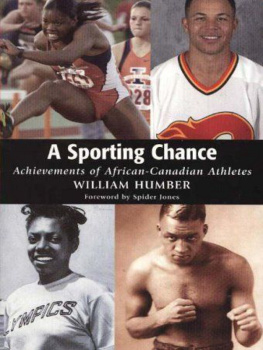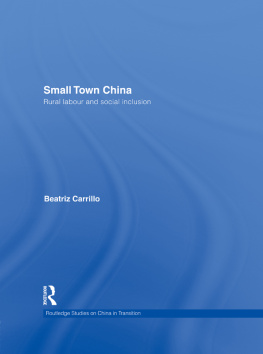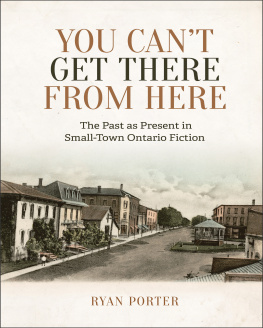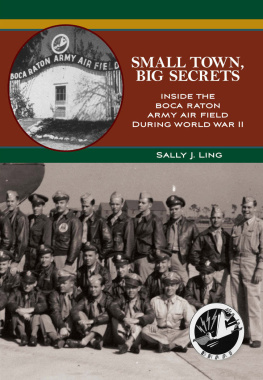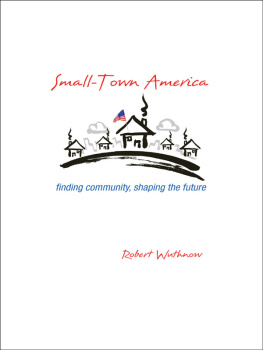BOWMANVILLE
A SMALL TOWN AT THE EDGE
William Humber
Bowmanville
A Small Town at the Edge
Published by Natural Heritage / Natural History Inc.
P.O. Box 95, Station O,
Toronto, Ontario M4A 2M8
Copyright 1997 William Humber
All Rights Reserved
No portion of this book with the exception of brief extracts for the purpose of literary review, may be reproduced in any form without the permission of the publisher.
Design by Steve Eby
Printed and bound in Canada by Mothersill Printing Inc.,
Bowmanville, Ontario
Canadian Cataloguing in Publication Data
Humber, William, 1949
Bowmanville: a small town at the edge
Includes bibliographical references and index.
ISBN 1-896219-21-7
1. Bowmanville (Clarington, Ont.) - History. I. Title.
FC3099.B685H85 1997 | 971.356 C97-930511-X |
F1059.5.B685H85 1997
Natural Heritage / Natural History Inc. acknowledges the support received for its publishing program from the Canada Council Block Grant Program. We also acknowledge with gratitude the assistance of the Association for the Export of Canadian Books, Ottawa, and the office of the Ontario Arts Council, Toronto.
Acknowledgments
Writing a small towns story presents problems that other types of histories avoid, particularly if one is a resident of that town. One risks offending some while angering others for neglecting their place in the towns past. Having said that however the opportunity to express both affection for common places and experiences, and occasional criticism of inappropriate decision-making, is one that one would not wish to avoid.
I begin by noting my debt to the many fine histories of the town written over the years including Colemans History of the Early Settlement of Bowmanville and Vicinity, Fairbairns History and Reminiscences of Bowmanville, Squairs The Townships of Darlington and Clarke, Hamlyn, Lunney and Morrisons Bowmanville: A Retrospect, the various editors of Picture the Way We Were, and Leetoozes The First 200 Years: A Brief History of Darlington Township.
My greatest debt however was to the inestimable Canadian Statesman newspaper, whose pages over the years brim with the life of the community. I say it elsewhere in this book and repeat it here, that in many ways Bowmanville is the Canadian Statesman and it would be hard to imagine one without the other.
Among the folks who have given advise, ideas and inspiration I mention only a few when so many are entitled to recognition. Garfield Shaw has collected as fine a pictorial record of a small town as exists anywhere. Garth Gilpin of the Bowmanville Business Area and Charles Taws of the Bowmanville Museum have read this manuscript in its early stages and provided helpful commentary. Neighbours and friends Marjorie and Eileen Couch and Muriel Crago have helped in many unseen but significant ways.
Institutional support from among others, Central Public School, including my former co-author Doris Falls, the Bowmanville Museum, and Bowmanville Branch of the Clarington Public Library have been invaluable.
My wife Cathie and children Bradley, Darryl and Karen share in the experience of living in Bowmanville. I salute another distant relative and wonderful popular historian, and the man I refer to as Mr. Bowmanville, Stu Candler to whose memory this book is dedicated.
I acknowledge, the many important writers including Garrison Keillor, William Least-Heat Moon, Peter Ackroyd, James Kunstler, Simon Schama and others whose words have influenced my own interpretation of the history and life of a small town and a special place.
I remember, in conclusion, my mother who gave me the love for reading and writing. Her inspiration will always be part of me.
A classic photo of Bowmanvilles Market Square, celebrating Queen Victorias Diamond Jubilee, 24 May 1897.
The Brick Town
An Introduction
In Bowmanville we had quite a gala day on Thursday last, when the Firemans Annual Gathering took place. The brick town has seldom looked so gay or lively.
The Gossiper, The Canadian Statesman, 12 September 1872
To palliate the shortness of our lives, and to compensate our brief time in this world, it is fit to have such an understanding of times past that we may be considered to have dwelled in the same. In such manner, answering the present with the past, we may live from the beginning and in a certain sense be as old as our country itself.
Peter Ackroyd, English Music
A rationale extension of bygone religious systems, fairy tales, and above all of psychoanalysis into architectural expression becomes more urgent every day.
Ivan Chtcheglov, as quoted in Lipstick Traces (Greil Marcus)
Long time residents, particularly those born in Bowmanville, often seem to pronounce their hometowns name as Boneville. The Canadian Statesman once reported that a New England newspaper used that spelling because a reporter interpreted it this way after interviewing an old lady who had been born here.
A local history can not avoid being at least partially an exercise in this kind of nostalgiaa looking back to a supposed golden age in which folks met each other daily on the towns streets, were proud of their home town and shared common institutions like their local public school where they met those both like themselves and different. Nevermind that the reality was often at odds with the memory. It at least had to have elements of truth to be preserved in such sepia tones.
The story of Bowmanville, Ontario contained in these pages is told from a point of view. The past may not have been as rose-hued as wed like to imagine, but it had real elements of public affinity in which folks saw themselves as part of a larger polity, one based on human comradeship and not the private pursuit of consumer identity.
One can read different points of view today which suggest either that we are returning to a more clamorous public sense of obligation and lifestyle, or another which argues that our real destiny is a soothing, mall-like existence of private realities.
What is particularly apparent, however, is that regardless of what takes place (and it will probably be a mixture of the polar opposites), successful urban living, as opposed to that which just gets by as a collection of gated communities and monster stores, will be based on the uniqueness and community spirit of a place. It will embody what James Kunstler calls, chronological connectivityin which the past is allied with a vision for the future. The development of these types of places, now commonly referred to as renaissance communities, is controlled to a greater extent than might be thought by local residents.


